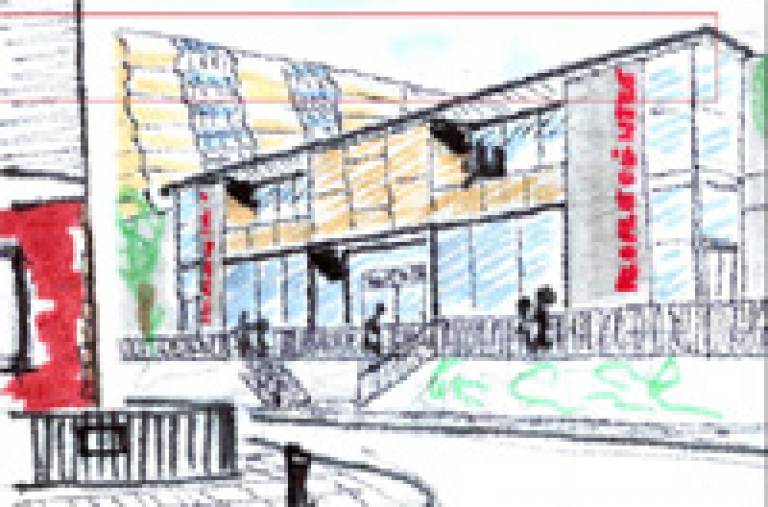Planning Bloomsbury
11 October 2005
UCL's location at the heart of Bloomsbury has provided students from the UCL Bartlett School of Planning with the ideal model for incorporating the latest trends in planning and regeneration.
 The students devoted much of the 2004-2005 session to specialised master classes aimed at producing imaginative and well-grounded proposals for Bloomsbury's regeneration.
The students devoted much of the 2004-2005 session to specialised master classes aimed at producing imaginative and well-grounded proposals for Bloomsbury's regeneration.
Professor Sir Peter Hall (Bartlett School of Planning), emphasised the importance of the project: "Bloomsbury represents a magnificent challenge: magnificent, because it is one of the greatest 18th- and 19th-century townscapes that the British Isles have to offer; a challenge because its quality has been massively degraded for more that half a century by the University of London and its constituent colleges, who have scandalously neglected and vandalised the heritage they inherited."
Encompassing areas such as urban design, property development, regeneration and transport morphology, the project dealt directly with the issues facing UCL and Bloomsbury. Carlos Jiminez (BSc Urban Planning, Design & Management 3) explored the relationship between the UCL campus and its surroundings in his 'UCL Centrepoint'study. Carlos proposed using textured paths designed by UCL Slade students and light projections across departmental buildings, to help pedestrians navigate their way across the campus.
The 'Green Spine Project'undertaken by third year Urban Planning, Design & Management students Chidi Akiti, Winnie Ip and George Man consisted of improvements to three underutilised public spaces in Bloomsbury: the Friends House Garden, Tavistock Square and Torrington Square, which run through the UCL campus from Euston Station to the British Museum. Each space was developed around the concept of a particular user group and atmosphere to provide respectively, a serene space, a space for all and a students'square.
MSc Urban Regeneration students Nicola Theron, Arabi Iqbal, Saranta Savanananda and Christian Germadnik tackled the Grade II listed Brunswick Centre, a low-rise high density housing block built between 1967 and 1972. While the centre is currently the subject of a refurbishment proposal the students believe a more holistic approach is needed rather than the more overtly commercial direction the developers want to take. So instead of redeveloping just to maximise rental potential, the students have proposed using the Brunswick Centre to enhance the social and economic lives of those that live in and around it by providing a community centre, museum, life long learning and a health centre.
The start of the project coincided with UCL's President and Provost, Professor Malcolm Grant's commission of a study by Terry Farrell and Partners to turn the area into a culturally vibrant university quarter. Farrell and Partners, one of the world's leading architectural practices and designers of such London landmarks as the TV AM and MI6 buildings and, have drawn up some initial plans which would put UCL at the heart of the Bloomsbury quarter.
The Farrell and Partners' plan would create a variety of linked places from Fitzrovia in the west to Clerkenwell in the east and from Kings Cross and Euston in the north to St. Giles Circus and Covent Garden in the south. As a result the UCL community could be able to navigate easily on foot between UCL sites and enjoy relaxing, landscaped spaces which would include lighting and art by international designers and artists. The pedestrian is very much king in the scheme, which places an emphasis on fully pedestrianised areas and new crossings.
Central to the scheme is a gateway to UCL and the Wellcome Institute on Gordon Street to give both institutions a presence on Euston Road. From here, members of the UCL community would be able to walk unimpeded to Covent Garden via Gordon Square, Russell Square and the British Museum or walk down Malet Street which would act as a lively central spine to the university quarter, containing cafes, markets and festivals.
The students' findings have been published in a leaflet which is also available electronically. To read 'The Bloomsbury Project', use the link at the top of this article.
Image 1: Brunswick Centre
Image 2: Green Spine Project
Image 3: UCL Centrepoint
- Link:
- The Bloomsbury Project
 Close
Close

